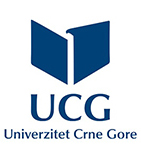How to review manuscripts
Peer review
...is critical because it
- Improves the quality of the published paper
- Ensures previous work is acknowledged
- Determines the importance of findings
- Detects plagiarism and fraud
- Plays a central role in academic career development
...adheres to the principles that
- It is a well understood concept
- Without it there is no control in scientific communication
- Journal editors evaluate and reject certain articles prior to external peer review
Why should you review?
GIVE
Academic duty
TAKE
Updated with latest developments
Helps with own research or new ideas
Career development
Awareness of new research before their peers
General interest in the area
Builds association with journals and editors
Editors’ view: what makes a good reviewer?
- Provides a thorough and comprehensive report
- Submits the report on time
- Provides well-founded comments for authors
- Gives constructive criticism
- Demonstrates objectivity
- Provides a clear recommendation to the editor
YOUR ULTIMATE CHECKLIST FOR REVIEWING A PAPER
First impressions
- Is the research original, novel and important to the field?
- Has the appropriate structure and language been used?
Abstract
- Is it really a summary?
- Does it include key findings?
- Is it an appropriate length?
Introduction
- Is it effective, clear and well organized?
- Does it really introduce and put into perspective what follows?
- Suggest changes in organization and point authors to appropriate citations.
- Be specific – don’t write “the authors have done a poor job”
Methodology
- Can a colleague reproduce the experiments and get the same outcomes?
- Did the authors include proper references to previously published methodology?
- Is the description of new methodology accurate?
- Could or should the authors have included supplementary material?
Results and discussion
- Suggest improvements in the way data is shown
- Comment on general logic and on justification of interpretations and conclusions
- Comment on the number of figures, tables and schemes
- Write concisely and precisely which changes you recommend
- List separately suggested changes in style, grammar and other small changes
- Suggest additional experiments or analyses
- Make clear the need for changes/updates
- Ask yourself whether the manuscript should be published at all
Conclusion
- Comment on importance, validity and generality of conclusions
- Request toning down of unjustified claims and generalizations
- Request removal of redundancies and summaries
- The abstract, not the conclusion, summarizes the study
References, tables and figures
- Check accuracy, number and citation appropriateness
- Comment on any footnotes
- Comment on figures, their quality and readability
- Assess completeness of legends, headers and axis labels
- Check presentation consistency
- Comment on need for colour in figures
Comments to the editor
1 - Comment on novelty and significance
2 - Recommend whether the manuscript is suitable for publication
3 - Confidential comments will not be disclosed to the author(s)

